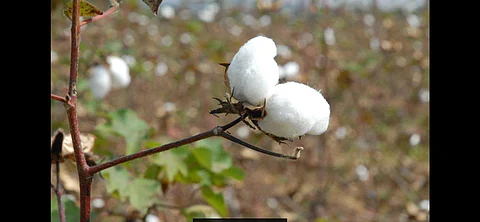

At a shopping mall in Bengaluru, I was searching for cotton garments that I could wear everyday. However, I returned home with barely anything—almost empty-handed! Pure cotton garments, especially innerwear, are difficult to find. Those garments that are ‘cotton’ also have some percentage of synthetic material mixed that is usually mentioned in fine print on the label.
When I asked Twitterati about cotton brands other than FabIndia, the choices were really limited. Those who suggested khadi ashram have never really visited it. This made me think about the missing cotton and its journey, from humble and ubiquitous to premium and elite.
This initially humble cotton is intertwined with India’s business history; with its abundance of cotton exports, India ruled the world for many centuries. We were not just good at producing good quality cotton—we were also inventors and experimented with weaving. We deciphered how to add colour to the fabric, thereby multiplying the number of products to be sold with the same base fabric. One of our key innovations was adding colours that did not run—and the world went crazy after our fabrics. Cities like Masulipatnam, Dhaka, Calicut and Kashi came up as big centres of cotton weaving.
In museums in South East Asia, one can see displays of the Ikat fabric which was dyed using vegetable colours and herbs like turmeric. Anecdotes say that since these fabrics were embedded with medicinal herbs, those who took ill were cloaked in them to heal.
Then the Industrial Age swooped right in, giving a major blow to our indigenous, small-scale and sustainable industry—textile mills were the first to be mechanised.
Although synthetic fabrics started to occupy our shelves owing to low cost, less maintenance and the fashionable look they had, khadi ashrams and local production kept the supply of cotton flowing.
Even until the 1980s and 1990s, one could take pure cotton fabric to the local tailor, who would then use her or his creativity to design a beautiful piece of clothing.
But post-liberalisation, shopping malls started dominating big cities. The choices and brand labels were many, and demand sky-rocketed, pushing the demand for locally produced cotton aside. People were enamoured with the durability factor of synthetic fabric and the sheen they had. So, most brands started mixing and stacking their shelves with synthetic clothes. The same formula was used for upholstery and home linen. Walk into any home décor shop and ask for pure cotton—you will suddenly feel like a creature from a whole other planet!
But there is good news—Although the per hectare yield has a lot of scope for improvement, the Ministry of Textiles states that India continues to be the largest producer of cotton, accounting for 25% of global production.
Cotton trade engages about 6 million cotton farmers and 50–60 million people indirectly across the country. Interestingly, it also tells us that India’s cotton to non-cotton fabric consumption ratio stands at 60:40 against the world average of 30:70. But I can only wonder what that ratio was around Independence—my hunch says perhaps more than 90:10. Can we get back to those levels?
Despite being a net exporter, India does import cotton on a need basis. An assignment with a textile board told me about many toxic and even carcinogenic colours that are used for dyeing. Exporters have to submit certificates to declare that products being exported have none of these chemicals. India too has similar laws for fabrics that are imported. But, what about garments produced and sold in India? I could not find an answer, though there is ample data about the pollution these dyes cause—especially water pollution. No wonder that almost all the weavers I met chose to wear only pure, natural white cotton kurtas.
As consumers, have we stopped demanding pure cotton? Probably yes. Or are we choosing convenience over health and the environment? Are we choosing a huge variety of colours and styles in our wardrobe over the presumably limited options that cotton offers? Are our fashion designers not being creative enough with cotton? Are big brands taking over the markets, forcing us to buy what they produce? Do we lack awareness about the pros of wearing cotton and the cons of wearing synthetic clothes? I think, Yes. How many of us know that cheap colours can cause serious health hazards?
At the policy level, the government needs to work towards increasing per hectare yield, ensure competitive pricing of cotton, push innovations across the cotton supply chain and create awareness.
Maybe it is time to revert to small and local brands that are closer to customers and are driven by their needs. Should we choose explicit ones like style or implicit ones like health and environment friendly?
Entrepreneurs, do you see an opportunity for creating local niche brands that deal in natural fabrics only? I know a few exist on Instagram and WhatsApp, especially from Jaipur. I hope some of them will scale up. Customised designs can give you an edge over mass products—don’t you want to wear a kurta that is uniquely made for you, instead of one that matches the curtain material in someone’s house?
(Tweets @anuradhagoyal)
Anuradha Goyal
Author and founder of IndiTales